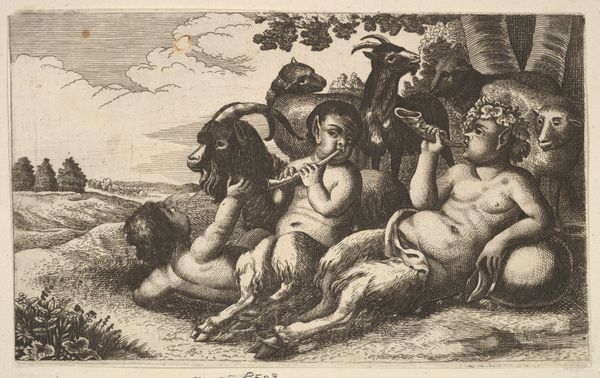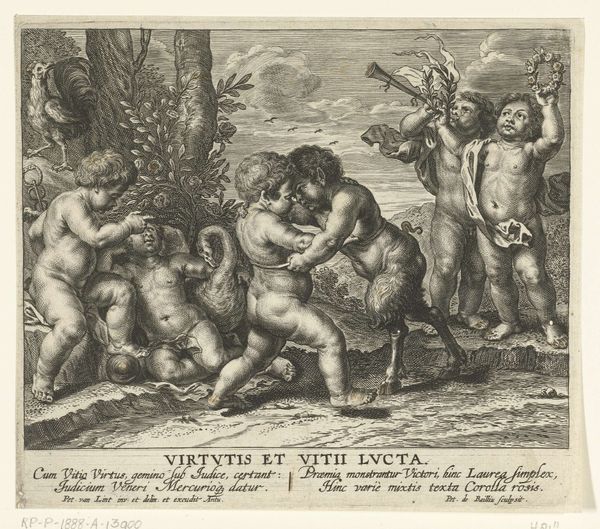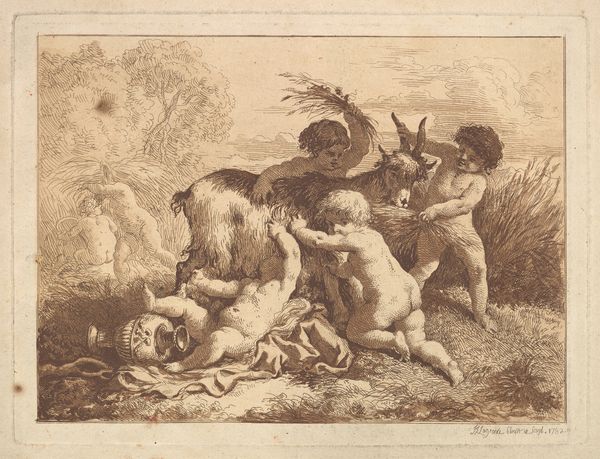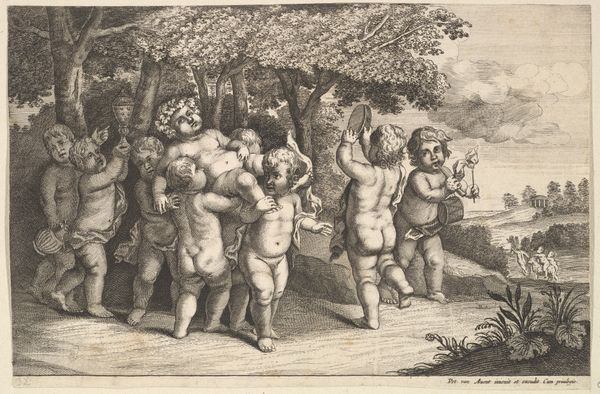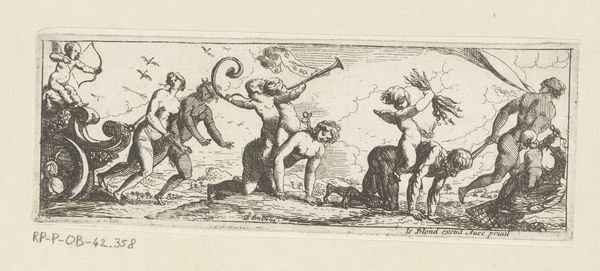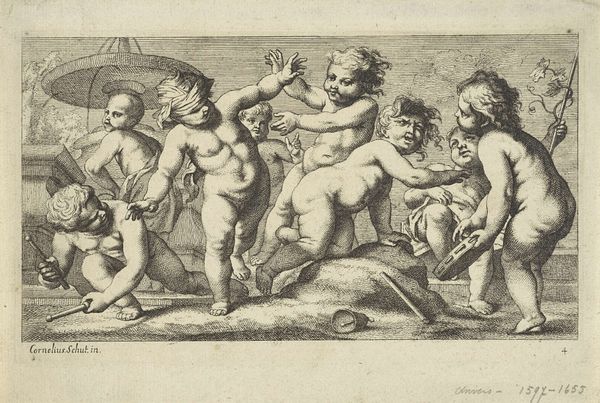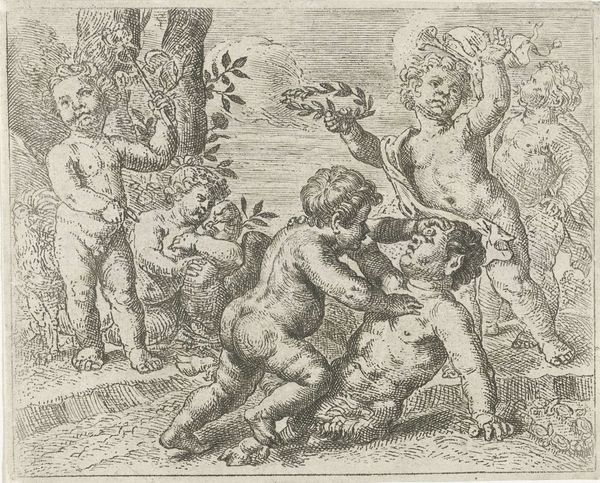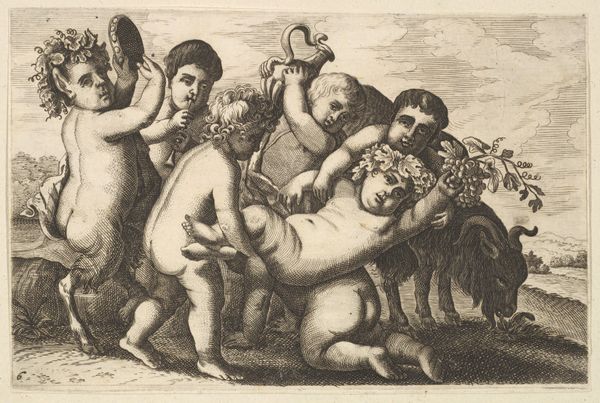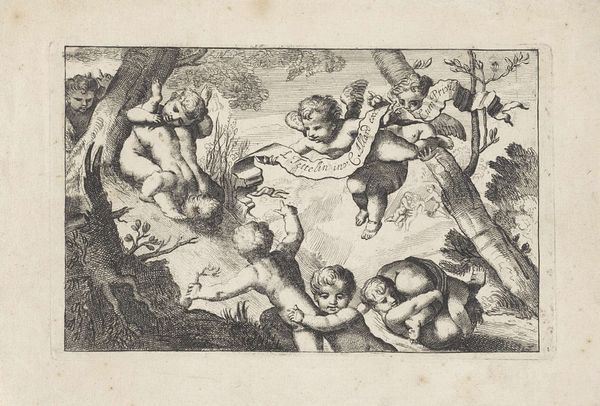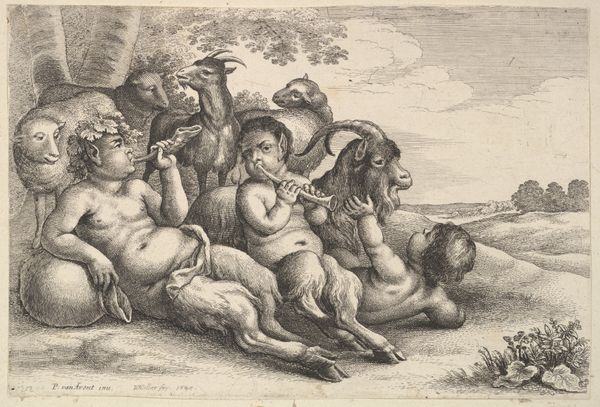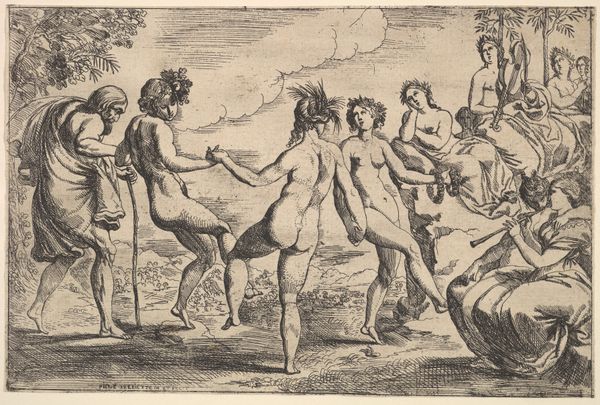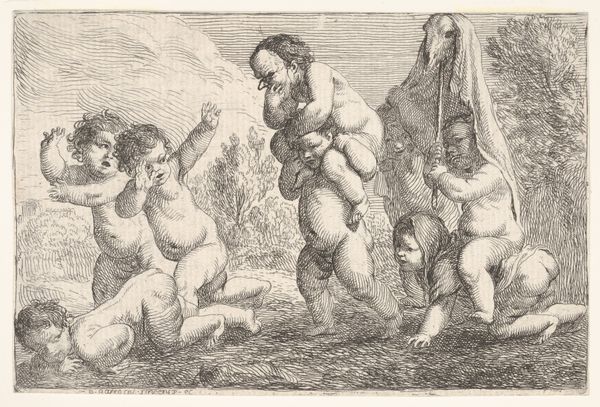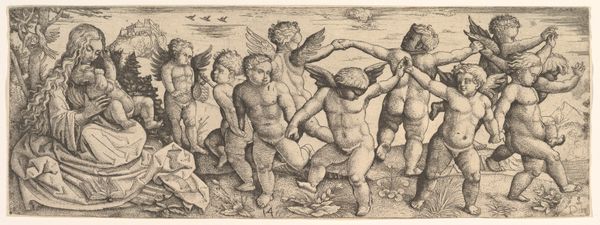
print, engraving
#
baroque
# print
#
old engraving style
#
landscape
#
figuration
#
genre-painting
#
engraving
Dimensions: height 135 mm, width 166 mm
Copyright: Rijks Museum: Open Domain
Editor: This is “Spelende putti in een landschap,” or “Playing Putti in a Landscape,” an engraving from sometime between 1598 and 1690, here at the Rijksmuseum. I’m really drawn to the details achieved in this print, the way the artist renders the textures of the figures' skin and the landscape. What aspects stand out to you? Curator: Well, what’s striking is how this print exemplifies the commodification of idealized leisure in the Baroque period. It's an engraving, a readily reproducible medium, allowing for widespread dissemination of imagery depicting playful putti, figures that themselves represent wealth and privilege removed from daily labor. Consider the materiality of the ink, the paper – how these relatively inexpensive materials transform into an object that signifies elevated status. What implications do you see in the accessibility of such imagery? Editor: I hadn't really thought about the way its creation democratizes the image, even if the image itself idealizes leisure. Curator: Exactly! And look at the production: an artist designed it, engravers created the plate, printers made impressions. It raises questions about the role of artisanal work in shaping notions of aristocratic idleness. The contrast between the labor required to create this print and the leisured subject it depicts is quite stark. It compels us to consider the social and economic dynamics underpinning art production itself. Does knowing this alter your initial perception of its details? Editor: Definitely. I was focused on the figures, but now I'm thinking about all the hands that went into making this image available and affordable for a wider audience. Curator: Precisely. By focusing on the means of production, we reveal the complex relationship between labor, art, and the construction of social hierarchies. Editor: This has really changed how I view prints from this era. It's not just the image, but also a reflection of production and consumption practices. Curator: Indeed. Analyzing art through its materials and modes of creation provides invaluable insights into the social structures of its time.
Comments
No comments
Be the first to comment and join the conversation on the ultimate creative platform.
